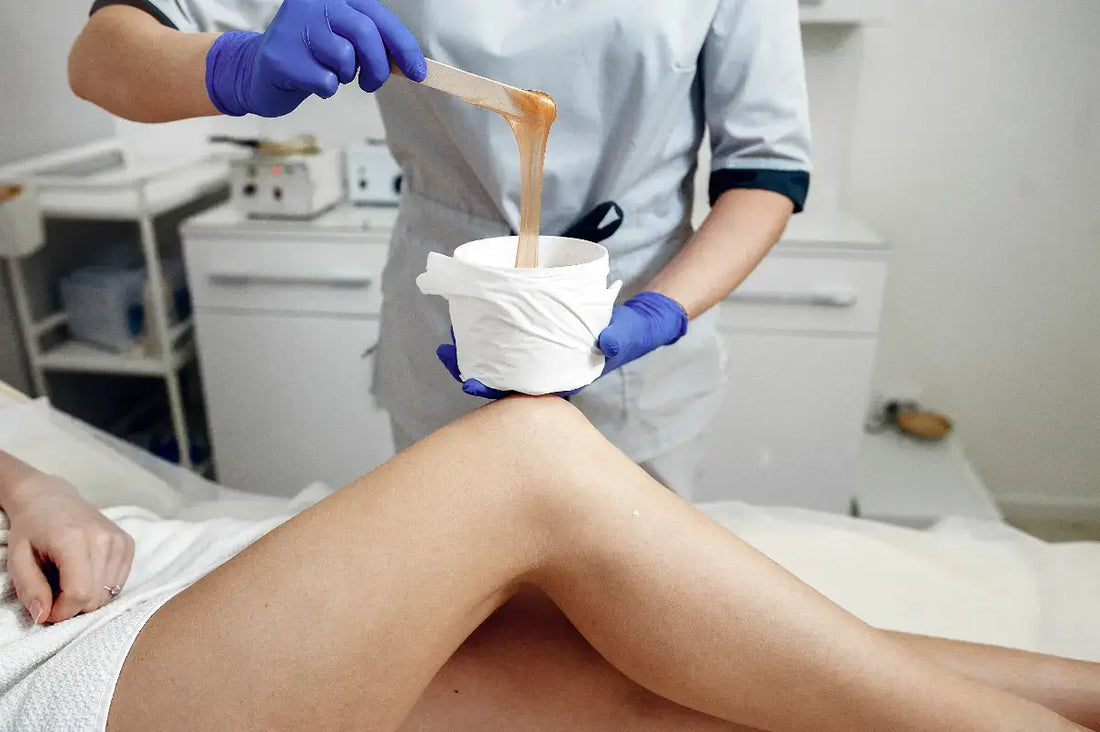In the world of beauty services, keeping clients safe and happy is priority number one. Knowing when waxing is safe- and when it’s not -can make all the difference. Understanding contraindications to waxing isn’t just about following protocols. It’s about taking care of your clients’ skin, health, and trust in you as their beautician. Each client deserves a comfortable and safe experience, and it’s up to us to deliver it.
Why conduct a pre-wax interview?
The pre-wax interview is not just a formality. This quick but thorough conversation is your chance to check in on the client’s health, skin type, and any recent treatments. It’s the best way to catch potential issues before they become problems and to show the client that their health is your top priority. By taking the time to ask a few thoughtful questions, you’re protecting them from possible reactions and mainly you’re building trust, setting a professional tone, and giving them peace of mind.
Common contraindications to waxing
Some situations make waxing a no-go, and as a beautician, it’s essential to recognize these before you begin.The most common contraindications to keep in mind:
- Skin conditions - waxing on skin that’s already sensitive or compromised (like with eczema, psoriasis, rosacea, sunburn, or rashes) can cause serious irritation and discomfort. Clients with these conditions may need to skip waxing, or at least avoid certain areas.
- Medications - certain medications, such as Accutane, Retin-A, or blood thinners, can thin or sensitize the skin. Waxing while using these medications might cause tearing, bruising, or worse.
- Recent skin treatments - if a client’s recently had laser therapy, chemical peels, or microdermabrasion, their skin may still be in recovery mode, and waxing can disrupt that process.
- Health conditions- some health issues, like diabetes, varicose veins, infections, or autoimmune diseases, increase the risk of complications from waxing.
- Allergies and sensitivities- some clients have allergies to common waxing ingredients like rosin. If they’ve had reactions before, it’s worth noting to avoid those products altogether
The pre-wax interview process
Preparation here is important. A good pre-wax interview starts with having the right questions ready. Keep a checklist of questions and contraindications ready. It’s helpful to have this for every client, ensuring you don’t miss anything important.
“Do you have any allergies or skin sensitivities?”
“Are you on any medications, especially for skin or blood thinning?”
“Have you recently had any skin treatments?”
“How would you rate your pain tolerance?”
- Red Flags:
Be prepared to respectfully pause or reschedule if a client’s answers raise concerns - like recent chemical peels, active skin conditions, or an allergy to your products. It’s better to be cautious than to risk their comfort or safety.
Evaluating skin and hair types
Getting a sense of the client’s skin and hair type can help you select the right products and methods. Thicker, coarse hair might need a different approach than fine, sparse hair, while sensitive skin may benefit from gentler techniques. Noticing these details upfront helps you avoid potential reactions and shows clients that you’re paying attention to their individual needs.
Client preparation for waxing
Once you’ve covered contraindications, the next step is client prep. To make the session smooth and successful, guide them on how to care for their skin before the appointment:
- Let clients know that hydrated, gently exfoliated skin responds better to waxing. Encourage them to stay hydrated and to exfoliate a day or two before their session.
- What to Avoid:
Tanning, intense sun exposure, and certain skincare products (like those containing retinoids) can increase skin sensitivity. Make sure they know to avoid these in the days leading up to their appointment.
How to handle sensitive situations?
It can feel awkward to bring up a contraindication, but a little care goes a long way. Approach these conversations with understanding. For example, if a client mentions recent laser treatment, explain why it’s best to hold off on waxing for a while, and offer alternatives like rescheduling or using a gentler method. It’s all about keeping them comfortable and safe, and most clients will appreciate the care you’re putting into their experience.
Conclusion
A thorough pre-wax interview and an understanding of contraindications are the fundamentals of a great waxing session. Taking the time to ask questions, listen, and educate clients shows them that you’re serious about their health. As a beautician, every client’s safety and satisfaction should be your top priority, and when you show that commitment, you’re building trust and long-term loyalty. In the end, a little extra effort can make a huge difference in creating a positive, safe, and professional experience for everyone.









